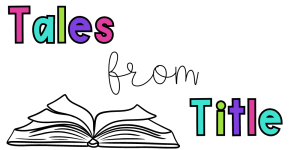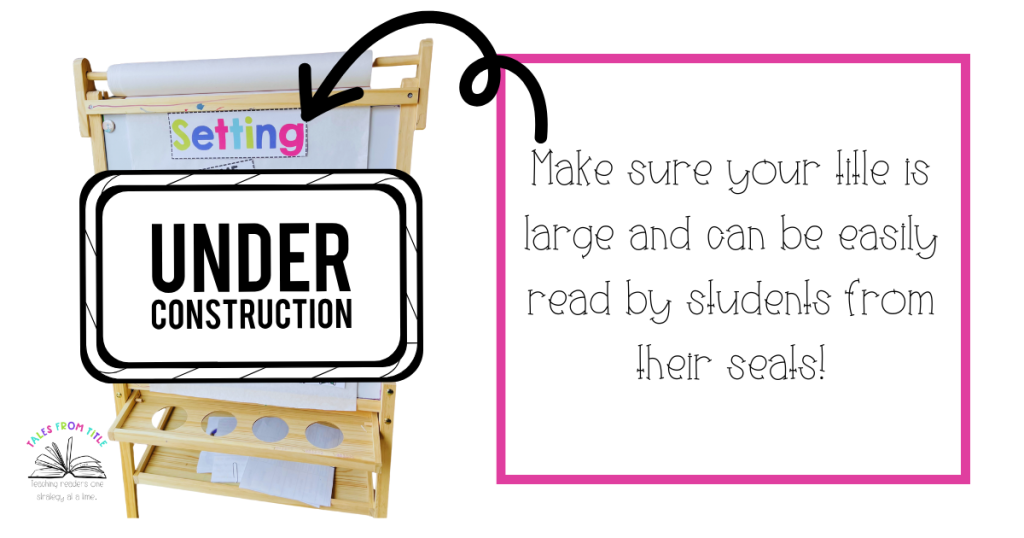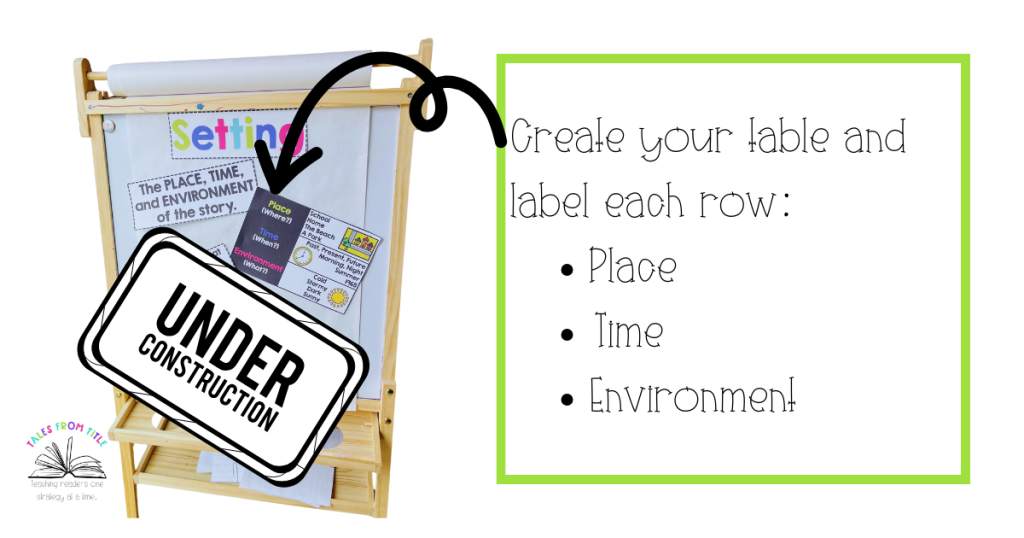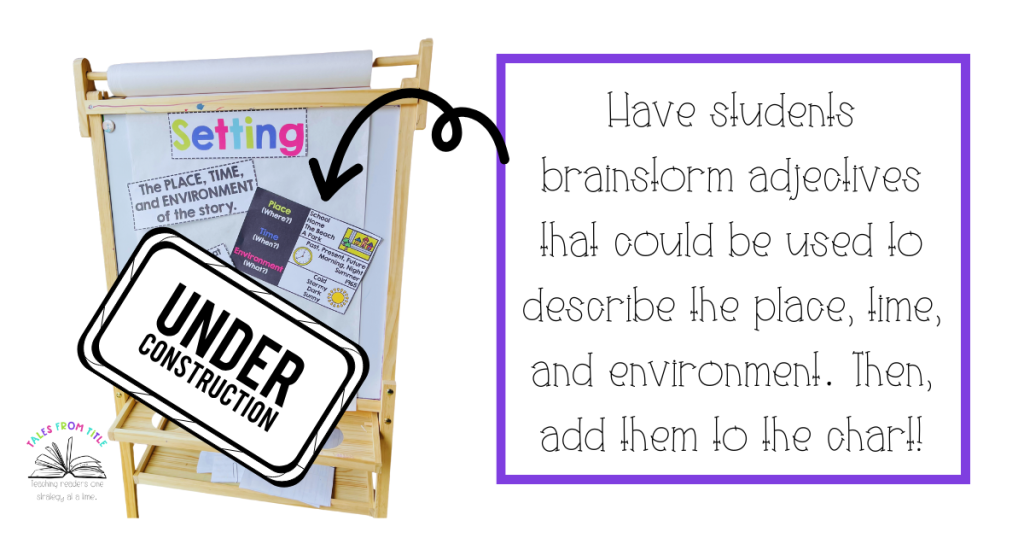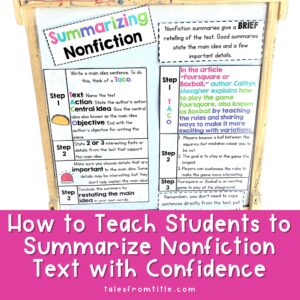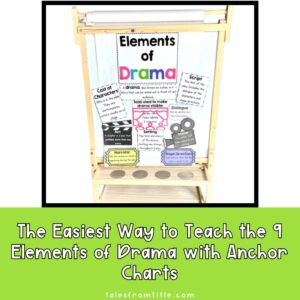If you’ve read my blog post about anchor charts, you know how important I think they are in the classroom. Anchor charts provide visual reinforcement for skills and topics students have been taught. Additionally, they help keep all of the skills and topics students have learned during the school year organized and easily accessible to use whenever they need to.
Today, I want to share with you the key components I would include on an anchor chart to teach my students about identifying setting. Now, keep in mind, this anchor chart is geared specifically toward intermediate-age students who need to go a bit deeper in their understanding of setting. They’ve learned in the primary grades about setting being where the story takes place. But as an intermediate-age student, they need to think more critically about setting and the role it plays in shaping the story. So, let’s get started!
Introduction
The day you make your anchor chart, I would just start with the topic (setting) already labeled on your chart. Then, engage students in a conversation about their background knowledge of setting. This lets you know what they already know about the topic and allows you to clear up any misconceptions they may have.
After you have a good idea of your class’ prior knowledge of setting, add the following information to your chart: Setting is the place (where), time (when), and environment (what) that the story takes place in. You might choose different wording, but I like to include the term environment in my definition because it adds depth to our description of setting by going beyond the usual where and when a story takes place.
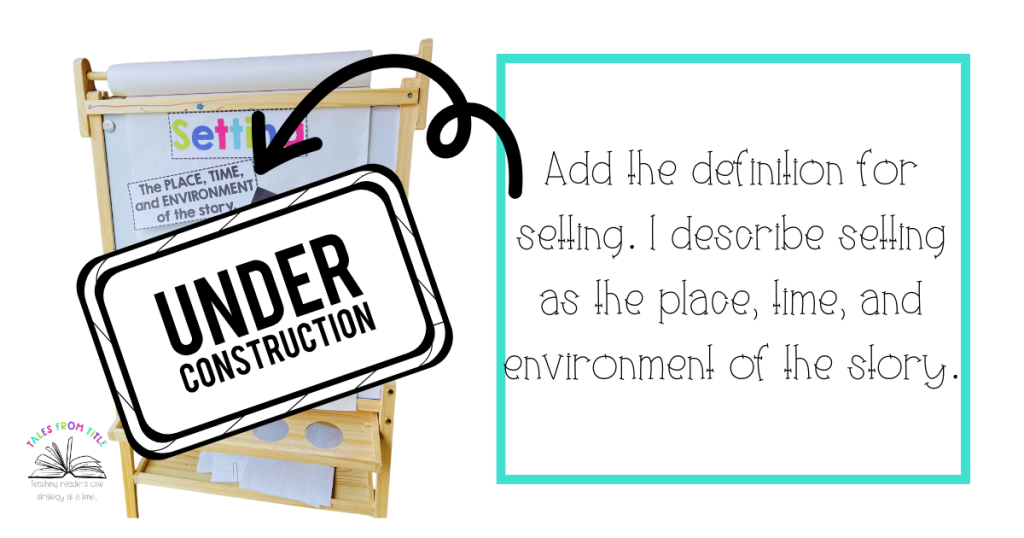
Depending on the curriculum your school uses, your students may not have ever heard of including words to describe the environment of the story when explaining the setting. So, you may need to spend some additional time explaining what you mean when you are talking about identifying the environment of the story (i.e. stormy, dark, cold, empty, crowded, etc.). You can also spend time practicing identifying the environment of previously read text. This can be from read-alouds, articles, or stories from your reading series.
The Three Components of Setting
Next, add a table that is 2 columns wide and 3 rows down. In the first column, label each row with the following headings: place, time, and environment. I also chose to include the word where with place, the word when with time, and the word what with environment. This just gives students additional vocabulary to use when they need to refer to the anchor chart.
After you have each component of setting labeled on your table, it’s time to add some examples to your chart. You can do this in a variety of ways: whole-class discussion, table talk, turn and talk, etc. It’s completely up to you! Once your class has come up with examples for place, time, and environment, add them to the anchor chart.
Setting Affects the Storyline
Discuss with your class how setting influences the storyline. For instance, compare a beach setting to a school setting. Highlight that the setting shapes the narrative, making each story unique. Then, add a bullet point to your chart reminding students that setting affects the story.
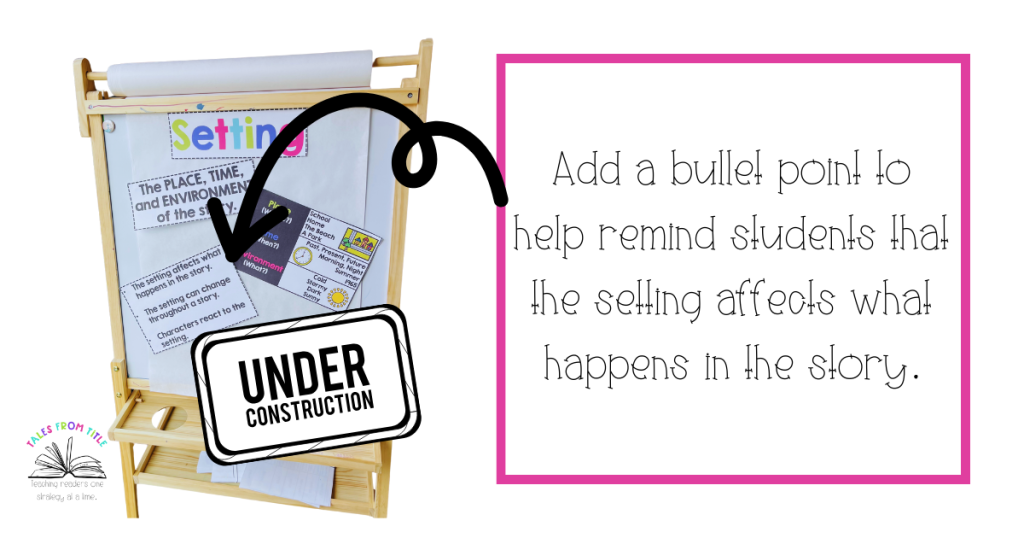
Changing Scenes
Teach your students that the setting of a story can change throughout the book. For example, a story that takes place in a school might have characters that move from the classroom to the playground, the gym, characters might even ride a bus, or go to their home. This helps students know that the setting can be fluid and constantly changing. Then, add a bullet point to your anchor chart to remind students that the setting can change throughout a story.
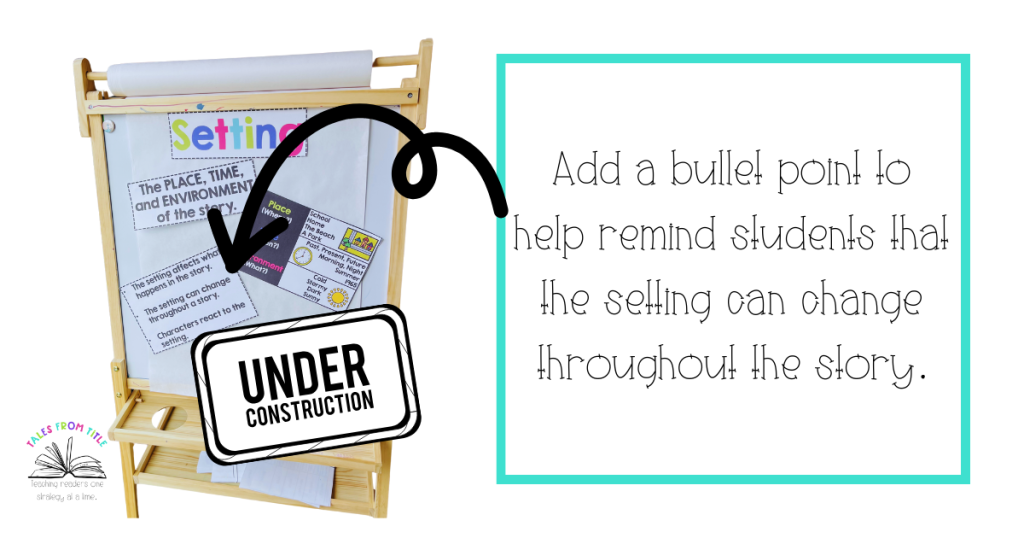
Characters React
Explain to your students that characters in a story react based on the setting. Give examples from text your class has read together. For example, a character would probably be scared in a haunted house or excited about the prospect of attending their first concert. Then, add a bullet point to your anchor chart to remind students that characters react to the setting.
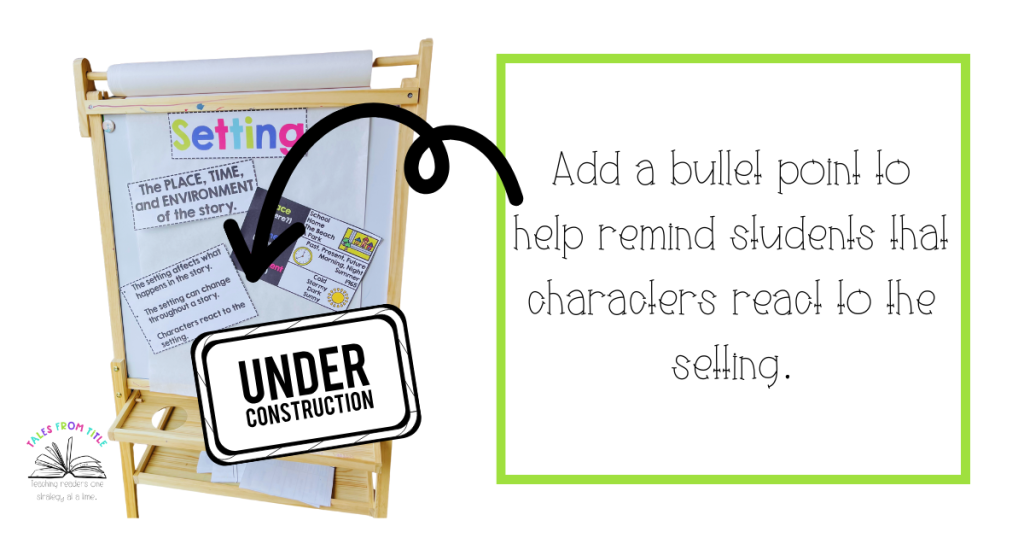
Good Readers Use Clues
To finish up your anchor chart, remind students that good readers use clues given by authors and illustrators to determine the setting of a story. Stress the importance of paying attention to these details as they read. Then, add this piece of information to your anchor chart.
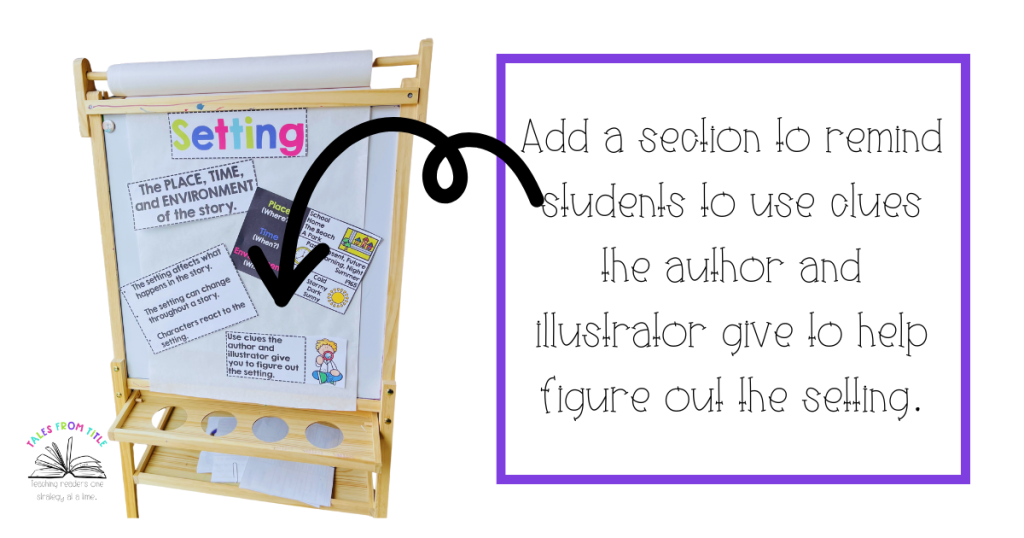
Jazz it Up!
I am a firm believer in providing visual clues and reminders to students to help trigger their memories of lessons. So, you might want to add pictures or clipart to your anchor chart to help trigger students’ memories when they refer to the anchor chart in the future. For example, you might use a map near the word place in your table, a clock near the word time, and some sort of weather symbol near the word environment. These are just some examples, but use pictures you think would provide meaningful reminders for your students are beneficial.
Wrapping it Up
You can wrap up your anchor chart lesson with a reminder to students that they should always be thinking about setting and how it impacts the characters’ actions and plot of the story.
Final Thoughts
I may have included information on my setting anchor chart that you don’t like or don’t believe is beneficial. Or, I may have left off something that you would include. That’s okay! Your anchor chart work needs to work for YOUR class and YOUR students, so make it your own!
If you are like me and cringe at the sight of the anchor charts you create, I have an anchor chart resource you can use to help your students when you are practicing identifying the setting of a story. It comes with a print-and-go option, build your own (large) anchor chart, an interactive digital option, student-sized printables, and interactive notebook pages all in color or black and white printing options! Plus, it includes a lesson plan script. It really takes the pressure off those of us who are not artistically inclined. 🤣
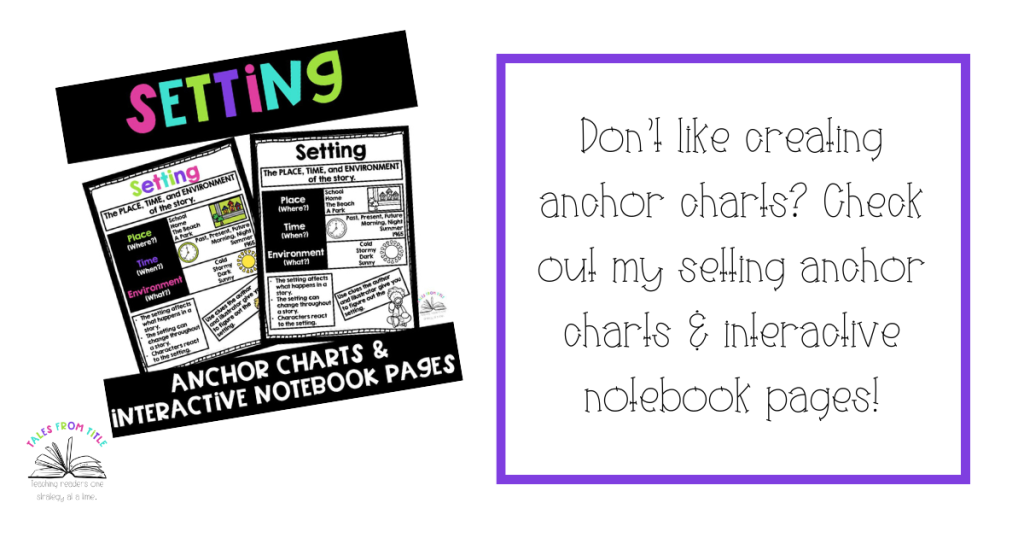
Share your favorite tips for creating beautiful anchor charts in the comments!
